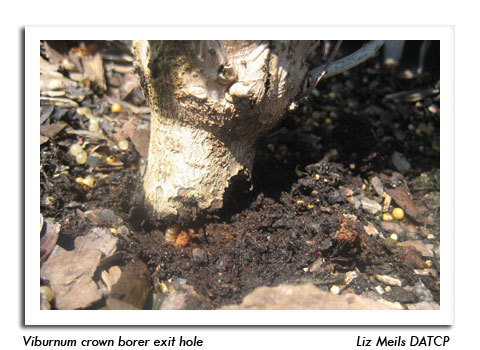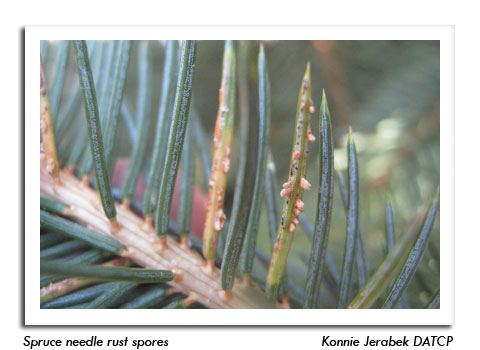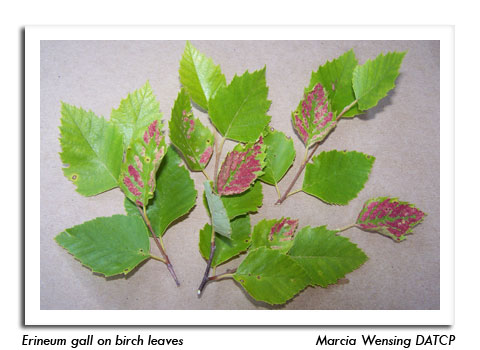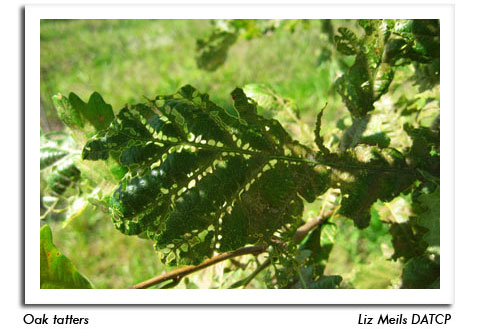
 |
|
|
Nursery & Forest
Volume 57 Number 14 Date 07/19/2012 VIBURNUM CROWN BORER - Larvae, exit holes and empty pupal cases of this clearwing moth were observed on American cranberrybush viburnum in Jefferson County. Diagnostic characteristics are swellings or cracks on the main stems and branches, as well as sawdust-like frass which exudes from the entrance site at the base of infested plants. Immediate removal and destruction of infested nursery stock is recommended since the viburnum crown borer eventually kills its host plant. SPRUCE NEEDLE RUST - Nursery inspectors noted this rust disease on Colorado blue spruce trees in Marquette and Sawyer counties. The symptoms are orange, powdery spores that appear on the undersides of current-year needles. Spruce needle rust has two hosts, alternating from Labrador tea to spruce in spring, and from infected spruce to Labrador tea in summer. Infected needles turn yellow and fall off by the end of the growing season. In most instances, this rust is an aesthetic problem and no control is needed. Removal of all alternate host plants within 1,000 feet will reduce disease on spruce but is usually impractical. LEAF TATTERS - Maples and oaks, along with numerous other tree species around the state, are showing lacy, ragged leaves, a condition known as leaf tatters. This disorder appears at leaf emergence and may affect trees of all sizes and ages. The specific cause is unknown, although environmental stress and herbicide drift have been implicated. Most trees eventually produce a new flush of healthy replacement leaves. Adequate watering, mulching and fertilization are all recommended to minimize tree stress and the occurrence of tatters. ERIOPHYID MITE - Light infestations of this mite were found on river birch in Marquette, Ozaukee and Rock counties. Their pattern of feeding causes very distinct erineum galls?essentially a mass of leaf hairs containing thousands of tiny mites?to develop on the undersides of leaves. Damaged foliage becomes wrinkled and turns reddish. Activity should subside this month and no corrective action is needed. --Liz Meils, DATCP Nursery Inspector 



|
|
|